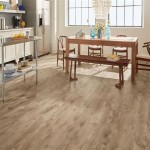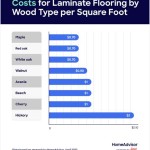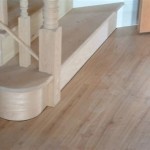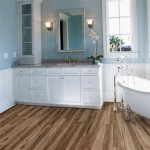Hardwood Flooring Stain Colors: A Comprehensive Guide
Selecting the appropriate stain color for hardwood flooring is a critical decision that significantly impacts the overall aesthetic of a space. The chosen stain color influences the perceived size of the room, its ambiance, and its compatibility with existing or planned décor. This article provides a comprehensive overview of hardwood flooring stain colors, exploring various options, factors to consider during selection, and the impact each color can have on the final result.
Understanding the Undertones of Hardwood Species
The natural undertones inherent in different hardwood species play a significant role in how a stain color ultimately appears. These undertones are subtle hues that influence the final result and can either enhance or clash with the chosen stain. Ignoring these underlying tones can lead to unexpected and often undesirable outcomes. Some common hardwood options and their typical undertones are explored below:
Red Oak: Red oak is one of the most commonly used hardwood flooring materials. It possesses a characteristically warm, reddish undertone. This reddish hue interacts with stain colors, often intensifying warmer tones like reds and browns. When using lighter or cooler-toned stains on red oak, the reddish undertone might still be noticeable, potentially altering the intended final color. To minimize the red undertone's influence, a sanding sealer or a bleaching process can be applied before staining.
White Oak: White oak is known for its durability and versatility. Its undertones are generally more neutral or slightly yellow-brown compared to red oak. This makes white oak a more adaptable base for a wider range of stain colors. Lighter stains tend to appear truer to their intended color on white oak, and cooler tones, such as grays and whitewashes, are less likely to be influenced by strong underlying hues. However, the light tan undertones still require careful consideration, particularly when aiming for very light or starkly contrasting stain shades.
Maple: Maple hardwood is characterized by its creamy white to light tan coloration and a relatively subtle grain pattern. Due to its light color and tight grain, maple can be somewhat challenging to stain evenly. Often, staining can result in a blotchy appearance if the wood isn’t properly prepared. Nevertheless, its lighter, neutral base makes it a good option for achieving light, modern stain colors. It is essential to use a pre-stain wood conditioner to help ensure uniform stain absorption and minimize blotchiness.
Hickory: Hickory is a dense and durable hardwood known for its pronounced grain variations and color contrasts. It can range from creamy white to a darker brown, often with reddish-brown streaks. These natural color variations add character but also present a challenge when staining. The stain will absorb differently in the lighter and darker areas, resulting in a more varied and rustic appearance. Choosing a stain color that complements the natural variations or opting for a lighter stain can help to accentuate the wood's inherent beauty.
Walnut: Walnut hardwood possesses a naturally rich, dark brown color with subtle purple undertones. It is often preferred for its inherent color depth, and many homeowners choose to simply apply a clear finish to enhance its natural beauty. However, when staining walnut, it is important to consider its existing dark coloration. Dark stains might not show much difference, while lighter stains might not fully penetrate the wood's richness, resulting in a muted effect. Due to its natural beauty, it's often best to use oil-based finishes to bring out the wood's natural depth.
Exploring Popular Stain Color Categories
The spectrum of available stain colors can be broadly categorized into several popular groups, each offering a distinct aesthetic: light, medium, dark, gray, and specialty tones. Understanding the characteristics of each category and their effects on a space is crucial for informed decision-making.
Light Stains: Light stain colors, such as natural, honey, or whitewash, allow the natural grain and character of the wood to remain prominent. They are most suitable for smaller rooms, as they reflect light and create a sense of spaciousness. Light stains evoke a bright, airy, and casual ambiance. They harmonize well with various design styles, from Scandinavian to coastal. However, dust and scratches may be more visible on lighter floors, requiring more frequent cleaning and maintenance. Light stains are also a good option when you want to create a high-contrast look against darker furniture.
Medium Stains: Medium stain colors, encompassing shades like oak, maple, or walnut tones, offer a balance between light and dark. They provide warmth and depth without overwhelming a space. Medium stains are versatile and complement a wide range of interior design styles, from traditional to transitional. They are practical for households with children or pets, as they tend to conceal dirt and scratches better than lighter or darker options. Medium stains offer a comfortable and inviting atmosphere.
Dark Stains: Dark stain colors, including ebony, dark walnut, or mahogany, create a dramatic and sophisticated look. They can make a large room feel cozier and more intimate and can highlight architectural details. Dark floors can create a luxurious and elegant atmosphere when paired with lighter walls and furnishings. However, they tend to absorb more light and can make a smaller room feel even smaller. Additionally, dust, scratches, and pet hair are more visible on dark floors, requiring diligent cleaning. The deep coloration adds a touch of formality.
Gray Stains: Gray stain colors have gained considerable popularity in recent years, offering a modern and contemporary aesthetic. They can range from light, silvery gray to dark, charcoal gray. Gray floors pair well with minimalist and industrial design styles, creating a sleek and sophisticated ambiance. Depending on the specific shade of gray, they can either brighten or darken a room. Lighter grays can create a calming and airy atmosphere, while darker grays can add drama and depth. Gray stains can also be combined with other stain colors to create custom blends.
Specialty Stains: Specialty stain colors encompass a broad range of unique and non-traditional options, such as whitewashes, weathered looks, cerused finishes, and vibrant colors. Whitewashes create a light, airy, and rustic aesthetic, often used in coastal or farmhouse-style homes. Weathered looks mimic the appearance of aged wood, adding character and charm. Cerused finishes involve filling the wood grain with a contrasting color, often white or gray, to accentuate the grain pattern. Vibrant colors, such as blues, greens, or reds, are less common but can be used to create a bold and eclectic statement in certain spaces. These specialty finishes often require more specialized application techniques and may involve multiple layers of product.
Factors Influencing Stain Color Selection
Choosing the right stain color involves considering a variety of factors, including the existing décor, the room's natural light conditions, the desired ambiance, and personal preferences. Evaluating these factors helps to narrow down the options and make a more informed decision.
Existing Décor and Furnishings: Stain color should complement the existing décor and furnishings within the room. Consider the colors of the walls, furniture, rugs, and accessories. If the existing décor is primarily warm-toned, a stain color with warm undertones, such as a honey oak or a medium walnut, might be a suitable choice. If the existing décor is cool-toned, a stain color with cool undertones, such as a gray or a whitewash, might be more appropriate. It is generally advisable to bring samples of the stain colors under consideration into the room and observe how they look against the existing décor in different lighting conditions.
Natural Light Conditions: The amount and quality of natural light that a room receives significantly impact how a stain color appears. In rooms with ample natural light, darker stain colors can be used without making the space feel too small or gloomy. In rooms with limited natural light, lighter stain colors are generally preferable, as they help to reflect light and brighten the space. It is important to consider the direction of the sunlight entering the room. South-facing rooms tend to receive warmer light, while north-facing rooms tend to receive cooler light. This can influence the perceived warmness or coolness of the stain color.
Desired Ambiance and Style: The stain color should reflect the desired ambiance and style of the room. Light and airy stains can create a casual and relaxed atmosphere, while dark and rich stains can create a more formal and sophisticated atmosphere. Gray stains can evoke a modern and minimalist aesthetic, while specialty stains can add character and personality. Consider the overall design intent for the space and choose a stain color that aligns with that vision. Consider if you want a bright and airy feel or something more cozy and inviting.
Personal Preferences: Ultimately, the stain color should be something that the homeowner enjoys and finds visually appealing. While it is important to consider the aforementioned factors, personal preferences should also play a significant role in the decision-making process. Look at numerous samples and finishes and consider what feels most appropriate for the space.
By carefully considering the wood species, stain color categories, and influencing factors, homeowners can choose a hardwood flooring stain color that enhances their space and complements their personal style. Testing the chosen stain using several sample boards is always a good idea to ensure that the final results meet expectations.

What Color Should I Stain My Wood Floors

Wood Floors Stain Colors For Refinishing Hardwood

Choosing Stain Color For Hardwood Floors Na Flooring

What Color Should I Stain My Wood Floors

Wood Floors Stain Colors For Refinishing Hardwood

Stain Colors Wood Floor Hardwood

Hardwood Floor Staining Bona Stain Options Chart Wood Tech Flooring West Michigan S Professional Refinishing Installation New

Hardwood Flooring Stain Color Trends 2024 The Girl

How To Choose The Right Stain For Wood Floors Cambridge Home

How To Choose The Right Stain For Your Hardwood Floor Gc Flooring Pros
Related Posts








